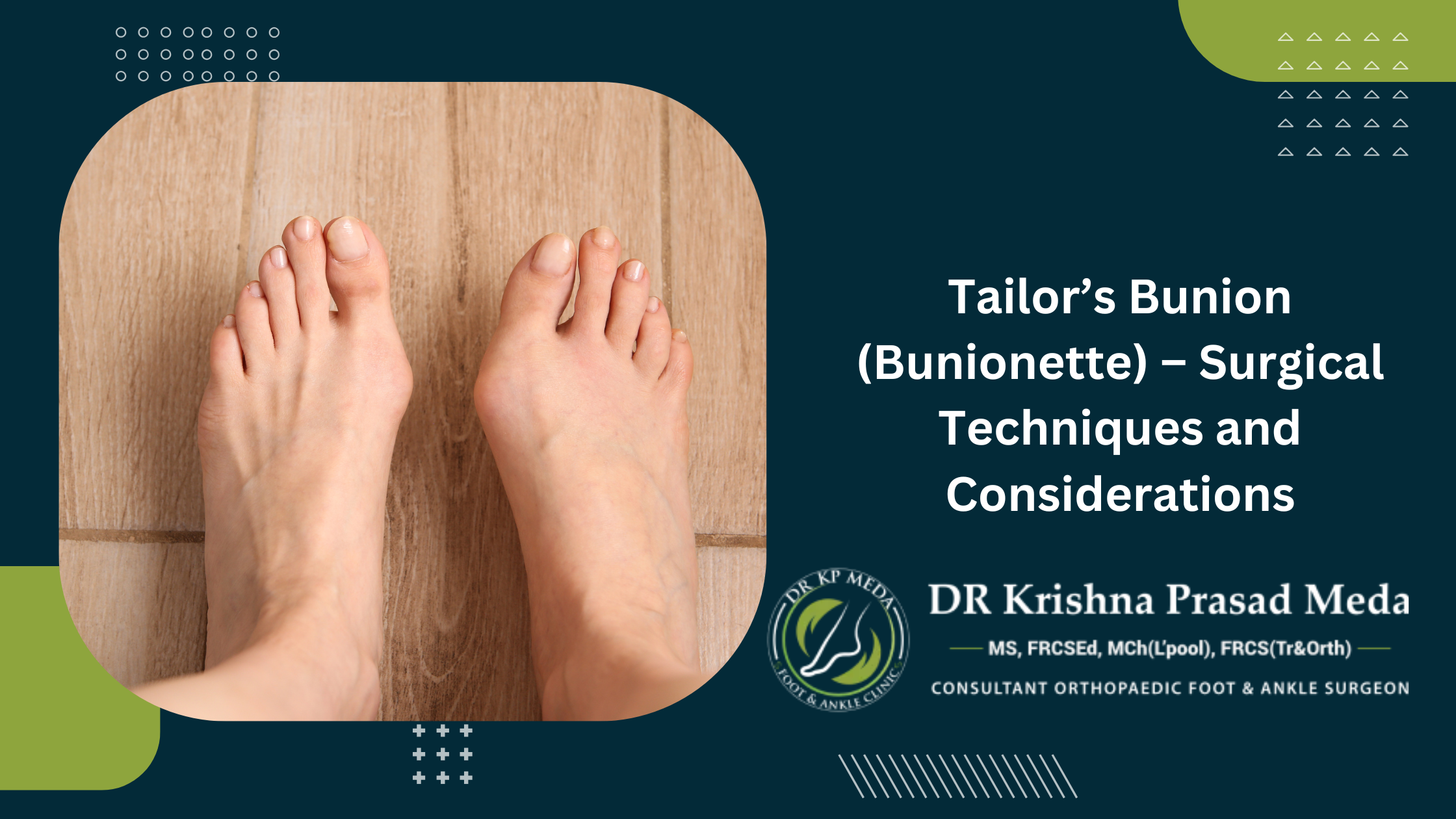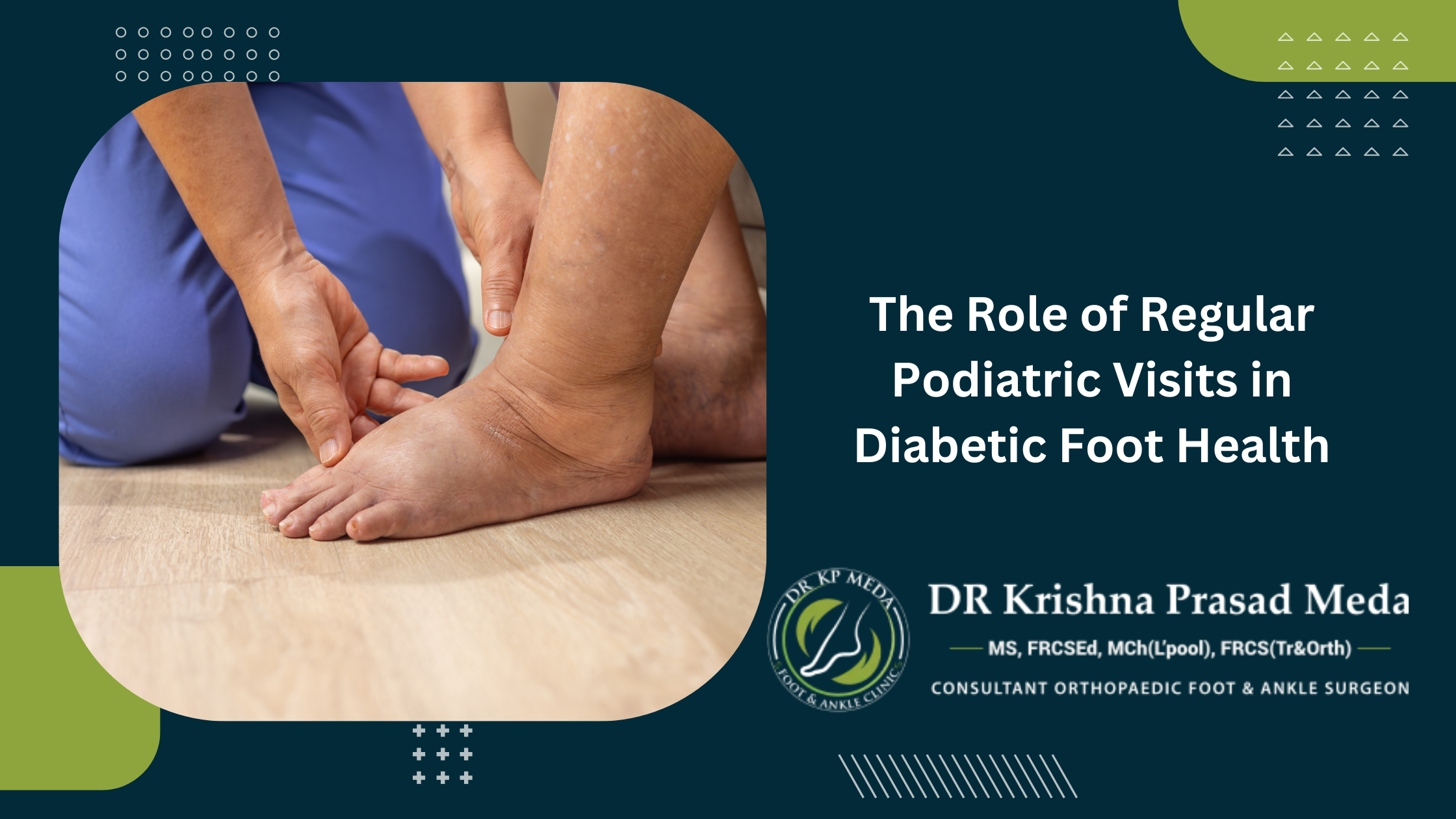When Is It Time for Surgery? Identifying Bunion Stages

A bunion is a frequent foot deformity that may result in discomfort, pain, and difficulty with everyday functions. With time, the joint of the big toe gets progressively displaced, causing swelling, stiffness, and mobility problems. Conservative measures like footwear modification, padding, orthotics, and anti-inflammatory medication come a long way in relieving symptoms for most individuals. But as the condition advances, bunion surgery might be the only realistic solution. Understanding how to determine bunion stages and identify “When to Consider Surgery” is essential in safeguarding your mobility and long-term foot health.
Understanding Bunions
Bunion occurs when the big toe joint (metatarsophalangeal joint) deviates, making the toe slope toward the second toe. This leads to a bony prominence on the side of the foot. Causes like genetics, ill-fitting shoes, arthritis, or frequent injury to the bunion can speed up the deformity. Bunions are not self-correcting, and they tend to progress with time.
Because the severity varies, podiatrists classify the condition into bunion stages, ranging from mild to severe. Each stage requires different treatment approaches. Understanding these stages helps patients know whether conservative care is enough or whether it’s time to explore Bunion Stages and Surgery

The Bunion Stages
1. Mild Stage
During the initial stage, the bunion is small in size, and the large toe might just slightly bend toward the other toes. The symptoms are normally mild and involve occasional tenderness following extensive walking or tight shoe wear. Treatment at this stage includes wider shoes, bunion pads, and orthotics. Surgery is not always required, but close monitoring is essential as the condition tends to degenerate slowly.
2. Moderate Stage
In the moderate phase, the bump is more prominent, and pain intensifies in activity. The big toe rubs against the second toe, often causing corns or calluses. Walking longer distances becomes painful, and swelling results after exercise. Though conservative management such as custom orthotics can still be beneficial, many patients start questioning “When to Consider Surgery.”
3. Severe Stage
At this point, the bunion is large, the deformity is significant, and the pain is constant. Shoes feel more and more constricting, and even a short walk can be challenging. The big toe overlaps or underlaps the second toe, with secondary conditions at times like hammertoes or bursitis. Bunion surgery at this point is frequently the most effective means of improving foot function.
4. Advanced/Chronic Stage
In severe cases, joint stiffness and arthritis develop. Pain is chronic, even when not wearing shoes, and ordinary daily activities like standing, walking, or exercising are severely handicapped. Nothing is relieved by non-surgical measures. For these individuals, Bunion Stages and Surgery come closely together, since surgery is the only means of restoring deformity correction and the elimination of chronic long-term disability.
When to Consider Surgery
Most patients have trouble deciding when to Consider Surgery. The best time isn’t dependent on how the bunion appears but on how it impacts quality of life. Surgery could be indicated if:
- Pain is interfering with daily activities like walking, exercising, or standing for prolonged periods.
- Non-surgical treatments no longer offer relief.
- The bunion continues to progress despite conservative management.
- Toe overlap or stiffness of the joint makes shoewear almost impossible.
- A bunion injury speeds up deformity progression or produces repeated swelling.
If such problems exist, seeing a podiatric surgeon is the next logical step. The physician will assess X-rays, foot shape, and lifestyle requirements to determine the best surgical approach.
Walking After Bunion Surgery
One of the biggest issues is mobility after surgery. Patients ask if they can walk after bunion surgery and when they can resume normal activities.
Usually, partial weight-bearing in protective surgical shoes starts within a few weeks to days, depending on the procedure. Full walking takes several weeks, yet the duration depends on bunion severity and surgical technique. Early rehab involves passive range-of-motion exercises to avert stiffness.
Bunion surgery recovery time is typically between 6 to 12 weeks for initial recovery, with full recovery in 6 months to a year. Recovery is affected by:
- Surgery: Simple operations recover quickly, but complex reconstructions take longer.
- Age and health: Younger, healthier patients recover faster.
- Aftercare compliance: Adhering to rest, elevation, and physical therapy instructions accelerates healing.
- Shoe changes: Gradual substitution of supportive shoes minimizes complications.
It’s essential to recognize that although recovery will take time, the long-term reward – less pain, regained mobility, and enhanced quality of life – dramatically outweighs the short-term discomfort.
Bunion Stages and Surgery: Making the Decision
The connection between bunions and the need for surgery is direct: the less the stage, the better the conservative management. But as the deformity advances, the need for surgery frequently becomes unavoidable. Knowing the appropriate time to intervene avoids unnecessary misery and interrupts complications such as arthritis or other toe deformities.
Patients need not wait out of apprehension. Techniques have become more advanced with better outcomes, less complications, and faster recovery. For most, surgery makes possible again the enjoyment of those activities previously thought impossible.
gery. Patients ask if they can walk after bunion surgery and when they can resume normal activities.
Usually, partial weight-bearing in protective surgical shoes starts within a few weeks to days, depending on the procedure. Full walking takes several weeks, yet the duration depends on bunion severity and surgical technique. Early rehab involves passive range-of-motion exercises to avert stiffness.
Bunion surgery recovery time is typically between 6 to 12 weeks for initial recovery, with full recovery in 6 months to a year. Recovery is affected by:
- Surgery: Simple operations recover quickly, but complex reconstructions take longer.
- Age and health: Younger, healthier patients recover faster.
- Aftercare compliance: Adhering to rest, elevation, and physical therapy instructions accelerates healing.
- Shoe changes: Gradual substitution of supportive shoes minimizes complications.
It’s essential to recognize that although recovery will take time, the long-term reward – less pain, regained mobility, and enhanced quality of life – dramatically outweighs the short-term discomfort.
Choose Dr. K P Meda for Bunion Surgery
Determining if the time is right for bunion surgery is a very individualized decision based on pain, mobility issues, and the development of the deformity. A knowledge of the stages of a bunion offers insight and allows patients to identify when to Consider Surgery.
Although recovery does require effort – keeping an eye on walking after bunion surgery, honoring activity restrictions, and paying attention to bunion surgery recovery time – the long-term comfort and enhanced quality of life make it an excellent choice.
Choose Dr. K P Meda for expert treatment in Dubai and start your journey toward healthier, more comfortable feet.
Also Read: Ingrown Nail treatment in Dubai
Recent Post

Tailor’s Bunion (Bunionette) – Surgical Techniques and Considerations
Tailor’s Bunion (Bunionette) – Surgical Techniques and Considerations Comfort, Confidence, & Care – Walk without Pain Tailor’s Bunion (Bunionette) is a painful bony bump that

The Role of Regular Podiatric Visits in Diabetic Foot Health
The Role of Regular Podiatric Visits in Diabetic Foot Health Every Step Matters – Lifelong mobility with regular podiatrist visits in Diabetic foot For people

Special Populations: Treating Hammer Toes in Diabetic or Arthritic Patients
Special Populations: Treating Hammer Toes in Diabetic or Arthritic Patients Hammer toes are a frequent deformity where one or more toes curve abnormally at the

When Is It Time for Surgery? Identifying Bunion Stages
When Is It Time for Surgery? Identifying Bunion Stages A bunion is a frequent foot deformity that may result in discomfort, pain, and difficulty with

